Di Jiang
Contextualized Token Discrimination for Speech Search Query Correction
Sep 04, 2025Abstract:Query spelling correction is an important function of modern search engines since it effectively helps users express their intentions clearly. With the growing popularity of speech search driven by Automated Speech Recognition (ASR) systems, this paper introduces a novel method named Contextualized Token Discrimination (CTD) to conduct effective speech query correction. In CTD, we first employ BERT to generate token-level contextualized representations and then construct a composition layer to enhance semantic information. Finally, we produce the correct query according to the aggregated token representation, correcting the incorrect tokens by comparing the original token representations and the contextualized representations. Extensive experiments demonstrate the superior performance of our proposed method across all metrics, and we further present a new benchmark dataset with erroneous ASR transcriptions to offer comprehensive evaluations for audio query correction.
EraRAG: Efficient and Incremental Retrieval Augmented Generation for Growing Corpora
Jun 26, 2025Abstract:Graph-based Retrieval-Augmented Generation (Graph-RAG) enhances large language models (LLMs) by structuring retrieval over an external corpus. However, existing approaches typically assume a static corpus, requiring expensive full-graph reconstruction whenever new documents arrive, limiting their scalability in dynamic, evolving environments. To address these limitations, we introduce EraRAG, a novel multi-layered Graph-RAG framework that supports efficient and scalable dynamic updates. Our method leverages hyperplane-based Locality-Sensitive Hashing (LSH) to partition and organize the original corpus into hierarchical graph structures, enabling efficient and localized insertions of new data without disrupting the existing topology. The design eliminates the need for retraining or costly recomputation while preserving high retrieval accuracy and low latency. Experiments on large-scale benchmarks demonstrate that EraRag achieves up to an order of magnitude reduction in update time and token consumption compared to existing Graph-RAG systems, while providing superior accuracy performance. This work offers a practical path forward for RAG systems that must operate over continually growing corpora, bridging the gap between retrieval efficiency and adaptability. Our code and data are available at https://github.com/EverM0re/EraRAG-Official.
Technical Report: A Practical Guide to Kaldi ASR Optimization
Jun 08, 2025Abstract:This technical report introduces innovative optimizations for Kaldi-based Automatic Speech Recognition (ASR) systems, focusing on acoustic model enhancement, hyperparameter tuning, and language model efficiency. We developed a custom Conformer block integrated with a multistream TDNN-F structure, enabling superior feature extraction and temporal modeling. Our approach includes advanced data augmentation techniques and dynamic hyperparameter optimization to boost performance and reduce overfitting. Additionally, we propose robust strategies for language model management, employing Bayesian optimization and $n$-gram pruning to ensure relevance and computational efficiency. These systematic improvements significantly elevate ASR accuracy and robustness, outperforming existing methods and offering a scalable solution for diverse speech recognition scenarios. This report underscores the importance of strategic optimizations in maintaining Kaldi's adaptability and competitiveness in rapidly evolving technological landscapes.
QualBench: Benchmarking Chinese LLMs with Localized Professional Qualifications for Vertical Domain Evaluation
May 08, 2025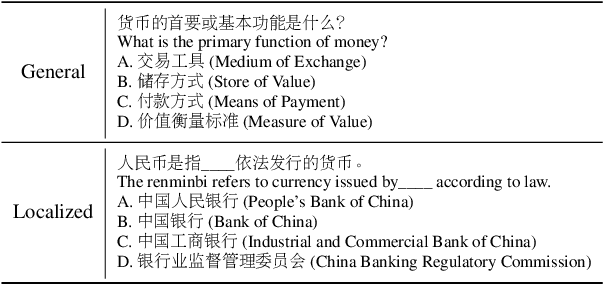

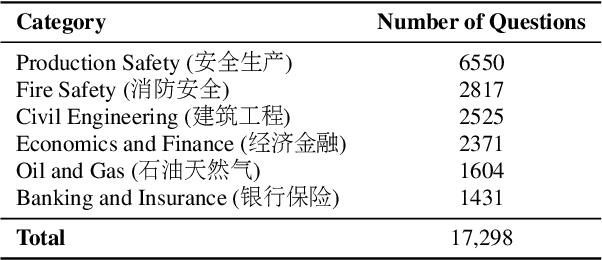

Abstract:The rapid advancement of Chinese large language models (LLMs) underscores the need for domain-specific evaluations to ensure reliable applications. However, existing benchmarks often lack coverage in vertical domains and offer limited insights into the Chinese working context. Leveraging qualification exams as a unified framework for human expertise evaluation, we introduce QualBench, the first multi-domain Chinese QA benchmark dedicated to localized assessment of Chinese LLMs. The dataset includes over 17,000 questions across six vertical domains, with data selections grounded in 24 Chinese qualifications to closely align with national policies and working standards. Through comprehensive evaluation, the Qwen2.5 model outperformed the more advanced GPT-4o, with Chinese LLMs consistently surpassing non-Chinese models, highlighting the importance of localized domain knowledge in meeting qualification requirements. The best performance of 75.26% reveals the current gaps in domain coverage within model capabilities. Furthermore, we present the failure of LLM collaboration with crowdsourcing mechanisms and suggest the opportunities for multi-domain RAG knowledge enhancement and vertical domain LLM training with Federated Learning.
Dialogue Language Model with Large-Scale Persona Data Engineering
Dec 12, 2024

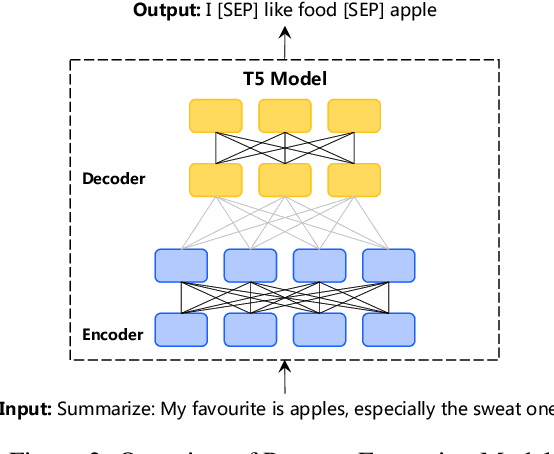

Abstract:Maintaining persona consistency is paramount in the application of open-domain dialogue systems, as exemplified by models like ChatGPT. Despite significant advancements, the limited scale and diversity of current persona dialogue datasets remain challenges to achieving robust persona-consistent dialogue models. In this study, drawing inspiration from the success of large-scale pre-training, we introduce PPDS, an open-domain persona dialogue system that employs extensive generative pre-training on a persona dialogue dataset to enhance persona consistency. Specifically, we present a persona extraction model designed to autonomously and precisely generate vast persona dialogue datasets. Additionally, we unveil a pioneering persona augmentation technique to address the invalid persona bias inherent in the constructed dataset. Both quantitative and human evaluations consistently highlight the superior response quality and persona consistency of our proposed model, underscoring its effectiveness.
Dial-In LLM: Human-Aligned Dialogue Intent Clustering with LLM-in-the-loop
Dec 12, 2024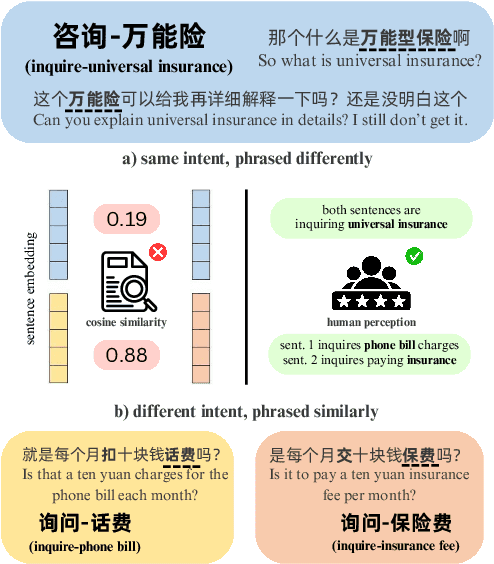
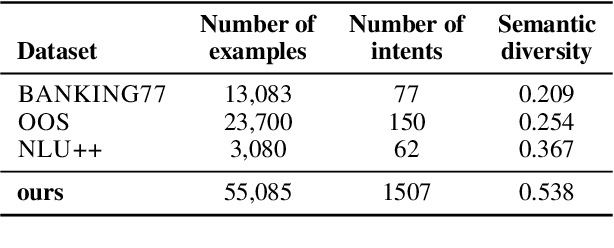
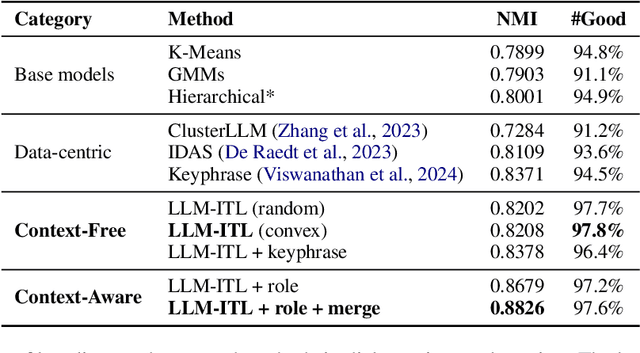
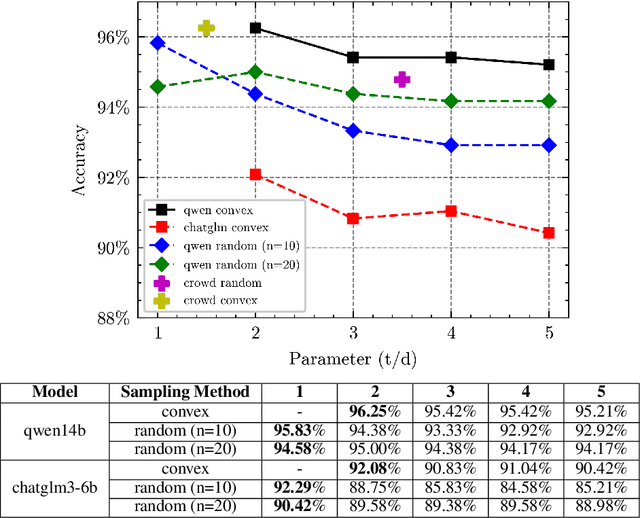
Abstract:The discovery of customer intention from dialogue plays an important role in automated support system. However, traditional text clustering methods are poorly aligned with human perceptions due to the shift from embedding distance to semantic distance, and existing quantitative metrics for text clustering may not accurately reflect the true quality of intent clusters. In this paper, we leverage the superior language understanding capabilities of Large Language Models (LLMs) for designing better-calibrated intent clustering algorithms. We first establish the foundation by verifying the robustness of fine-tuned LLM utility in semantic coherence evaluation and cluster naming, resulting in an accuracy of 97.50% and 94.40%, respectively, when compared to the human-labeled ground truth. Then, we propose an iterative clustering algorithm that facilitates cluster-level refinement and the continuous discovery of high-quality intent clusters. Furthermore, we present several LLM-in-the-loop semi-supervised clustering techniques tailored for intent discovery from customer service dialogue. Experiments on a large-scale industrial dataset comprising 1,507 intent clusters demonstrate the effectiveness of the proposed techniques. The methods outperformed existing counterparts, achieving 6.25% improvement in quantitative metrics and 12% enhancement in application-level performance when constructing an intent classifier.
ASR-EC Benchmark: Evaluating Large Language Models on Chinese ASR Error Correction
Dec 04, 2024Abstract:Automatic speech Recognition (ASR) is a fundamental and important task in the field of speech and natural language processing. It is an inherent building block in many applications such as voice assistant, speech translation, etc. Despite the advancement of ASR technologies in recent years, it is still inevitable for modern ASR systems to have a substantial number of erroneous recognition due to environmental noise, ambiguity, etc. Therefore, the error correction in ASR is crucial. Motivated by this, this paper studies ASR error correction in the Chinese language, which is one of the most popular languages and enjoys a large number of users in the world. We first create a benchmark dataset named \emph{ASR-EC} that contains a wide spectrum of ASR errors generated by industry-grade ASR systems. To the best of our knowledge, it is the first Chinese ASR error correction benchmark. Then, inspired by the recent advances in \emph{large language models (LLMs)}, we investigate how to harness the power of LLMs to correct ASR errors. We apply LLMs to ASR error correction in three paradigms. The first paradigm is prompting, which is further categorized as zero-shot, few-shot, and multi-step. The second paradigm is finetuning, which finetunes LLMs with ASR error correction data. The third paradigm is multi-modal augmentation, which collectively utilizes the audio and ASR transcripts for error correction. Extensive experiments reveal that prompting is not effective for ASR error correction. Finetuning is effective only for a portion of LLMs. Multi-modal augmentation is the most effective method for error correction and achieves state-of-the-art performance.
Acoustic Model Optimization over Multiple Data Sources: Merging and Valuation
Oct 21, 2024
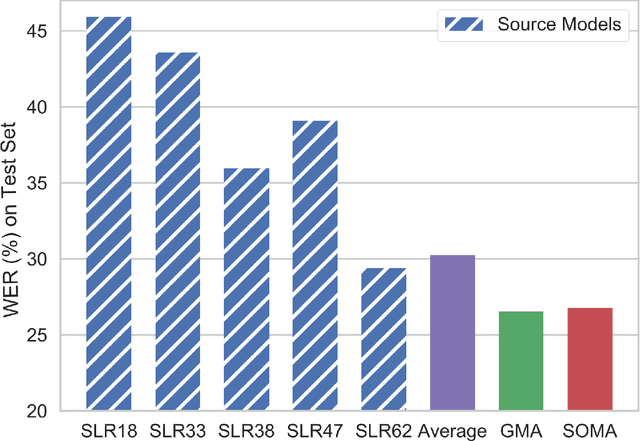
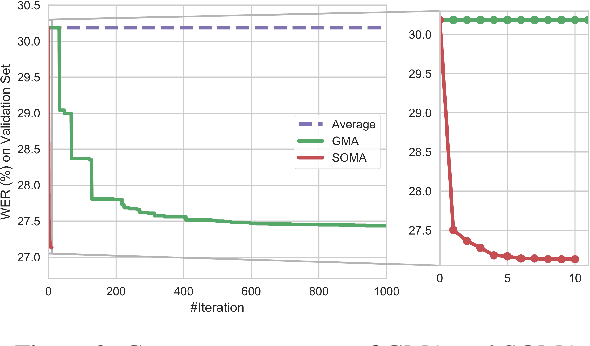
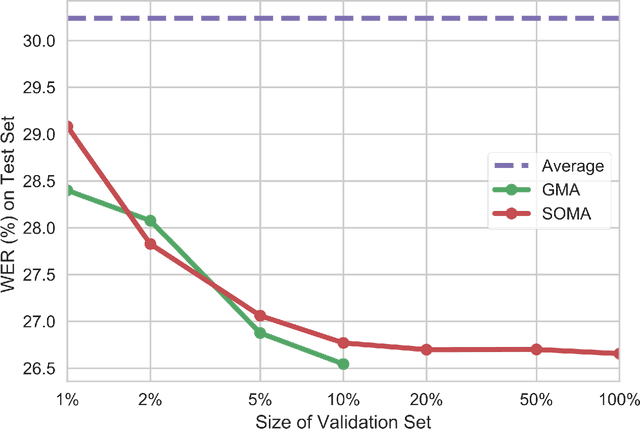
Abstract:Due to the rising awareness of privacy protection and the voluminous scale of speech data, it is becoming infeasible for Automatic Speech Recognition (ASR) system developers to train the acoustic model with complete data as before. For example, the data may be owned by different curators, and it is not allowed to share with others. In this paper, we propose a novel paradigm to solve salient problems plaguing the ASR field. In the first stage, multiple acoustic models are trained based upon different subsets of the complete speech data, while in the second phase, two novel algorithms are utilized to generate a high-quality acoustic model based upon those trained on data subsets. We first propose the Genetic Merge Algorithm (GMA), which is a highly specialized algorithm for optimizing acoustic models but suffers from low efficiency. We further propose the SGD-Based Optimizational Merge Algorithm (SOMA), which effectively alleviates the efficiency bottleneck of GMA and maintains superior model accuracy. Extensive experiments on public data show that the proposed methods can significantly outperform the state-of-the-art. Furthermore, we introduce Shapley Value to estimate the contribution score of the trained models, which is useful for evaluating the effectiveness of the data and providing fair incentives to their curators.
Expanding Chatbot Knowledge in Customer Service: Context-Aware Similar Question Generation Using Large Language Models
Oct 16, 2024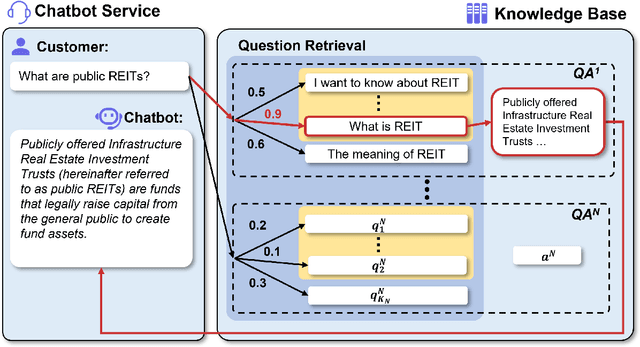

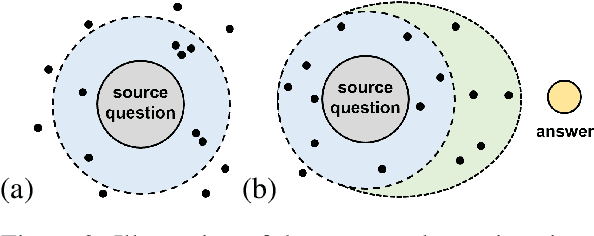

Abstract:Reliable responses of service chatbots are often achieved by employing retrieval-based methods that restrict answers to a knowledge base comprising predefined question-answer pairs (QA pairs). To accommodate potential variations in how a customer's query may be expressed, it emerges as the favored solution to augment these QA pairs with similar questions that are possibly diverse while remaining semantic consistency. This augmentation task is known as Similar Question Generation (SQG). Traditional methods that heavily rely on human efforts or rule-based techniques suffer from limited diversity or significant semantic deviation from the source question, only capable of producing a finite number of useful questions. To address these limitations, we propose an SQG approach based on Large Language Models (LLMs), capable of producing a substantial number of diverse questions while maintaining semantic consistency to the source QA pair. This is achieved by leveraging LLMs' natural language understanding capability through fine-tuning with specially designed prompts. The experiments conducted on a real customer-service dataset demonstrate that our method surpasses baseline methods by a significant margin in terms of semantic diversity. Human evaluation further confirms that integrating the answer that reflects the customer's intention is crucial for increasing the number of generated questions that meet business requirements.
Neural-Bayesian Program Learning for Few-shot Dialogue Intent Parsing
Oct 08, 2024
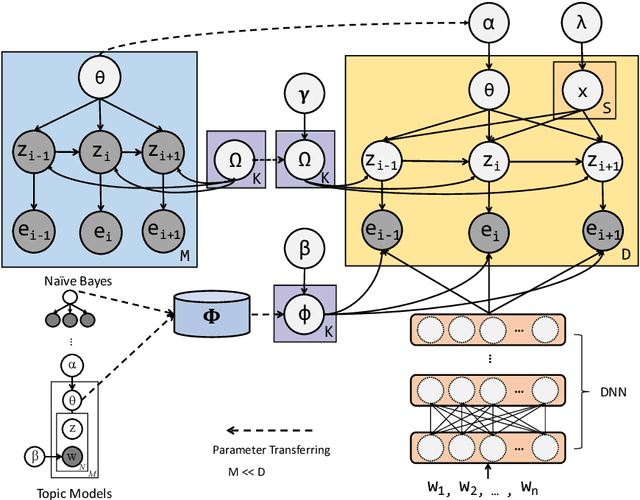
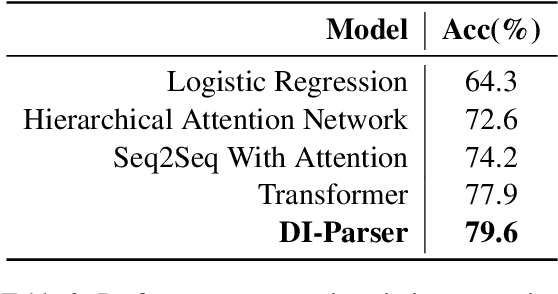
Abstract:With the growing importance of customer service in contemporary business, recognizing the intents behind service dialogues has become essential for the strategic success of enterprises. However, the nature of dialogue data varies significantly across different scenarios, and implementing an intent parser for a specific domain often involves tedious feature engineering and a heavy workload of data labeling. In this paper, we propose a novel Neural-Bayesian Program Learning model named Dialogue-Intent Parser (DI-Parser), which specializes in intent parsing under data-hungry settings and offers promising performance improvements. DI-Parser effectively utilizes data from multiple sources in a "Learning to Learn" manner and harnesses the "wisdom of the crowd" through few-shot learning capabilities on human-annotated datasets. Experimental results demonstrate that DI-Parser outperforms state-of-the-art deep learning models and offers practical advantages for industrial-scale applications.
 Add to Chrome
Add to Chrome Add to Firefox
Add to Firefox Add to Edge
Add to Edge